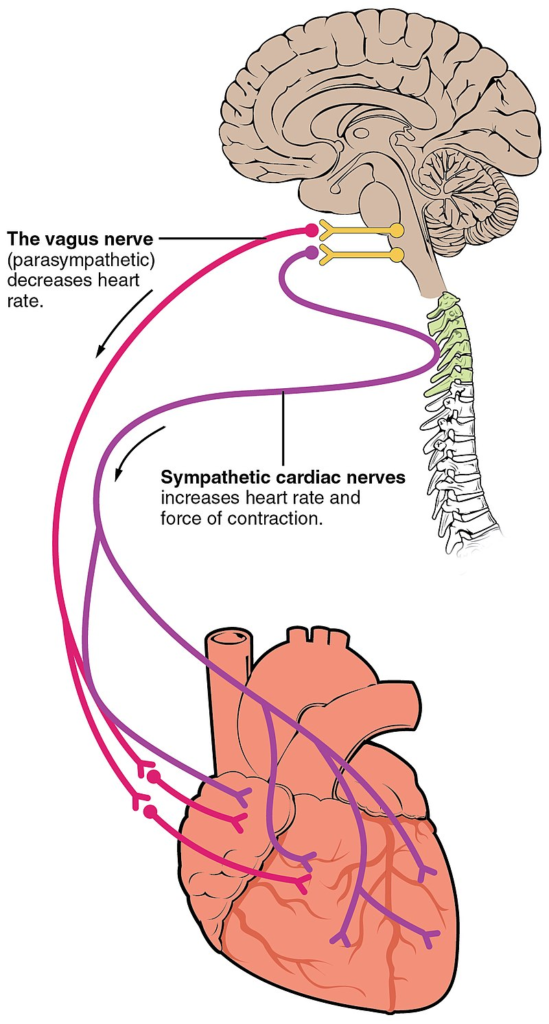The heartbeat is regulated by the autonomic nervous system (ANS), which maintains the balance between sympathetic and parasympathetic influences on the heart. This balance ensures that the heart rate and rhythm meet the body’s immediate needs, whether it’s the “fight or flight” response or the “rest and digest” state. Here’s a detailed note on how the autonomic nervous system regulates the heartbeat:

1. Components of the Autonomic Nervous System:
The autonomic nervous system consists of two main divisions:
a. Sympathetic Nervous System:
– Often referred to as the “fight or flight” system.
– Stimulates the body’s response to stress or emergencies.
– Releases norepinephrine (noradrenaline) as the primary neurotransmitter.
– Increases heart rate and force of contraction to prepare for physical exertion or stress.
b. Parasympathetic Nervous System:
Often referred to as the “rest and digest” system.
Promotes relaxation and recovery.
Releases Acetylcholine as the primary neurotransmitter.
Slows heart rate and reduces the force of contractions to conserve energy.
2. Role in Heartbeat Regulation:
The heart contains a cluster of specialized cells in the sinoatrial (SA) node, often called the “natural pacemaker.” The SA node generates electrical signals that initiate each heartbeat.
The autonomic nervous system influences the SA node and other parts of the heart to modulate heart rate and rhythm.
3. Sympathetic Regulation:
When the sympathetic nervous system is activated, it releases norepinephrine.
Norepinephrine binds to receptors on the SA node, causing it to depolarize more rapidly.
This accelerates the heart rate, leading to increased cardiac output and blood flow, which is beneficial during stress, physical activity, or emergencies.
4. Parasympathetic Regulation:
The parasympathetic nervous system, mainly through the vagus nerve (cranial nerve X), releases acetylcholine.
Acetylcholine binds to receptors on the SA node, slowing down its depolarization rate.
As a result, the heart rate decreases, leading to reduced cardiac output and a state of relaxation.
5. Baroreceptors:
Baroreceptors are specialized pressure-sensitive nerve cells in the carotid arteries and aortic arch.
They provide feedback to the autonomic nervous system about changes in blood pressure.
If blood pressure rises, the parasympathetic system is activated to slow the heart rate.
If blood pressure drops, the sympathetic system increases heart rate and contractility.
6. Hormonal Regulation:
Hormones like epinephrine (adrenaline) from the adrenal glands also influence heart rate.
In response to stress or danger, the adrenal glands release epinephrine, which acts similarly to norepinephrine, increasing heart rate and preparing the body for action.
7. Resting heart rate:
At rest, the parasympathetic nervous system has a dominant influence, reducing heart rate to maintain energy and promote recovery.
Age, fitness level, and overall health can influence the resting heart rate.
8. Variability:
The autonomic nervous system provides heart rate variability, meaning the ability of the heart rate to adjust in response to changing physiological demands.
Healthy heart rate variability reflects the body’s adaptability and resilience.
Proper heartbeat regulation by the autonomic nervous system is essential for maintaining cardiovascular health and adapting to the body’s changing needs. An imbalance in sympathetic and parasympathetic influences can lead to arrhythmias and other heart-related issues, emphasizing the importance of autonomic nervous system function in overall well-being.



